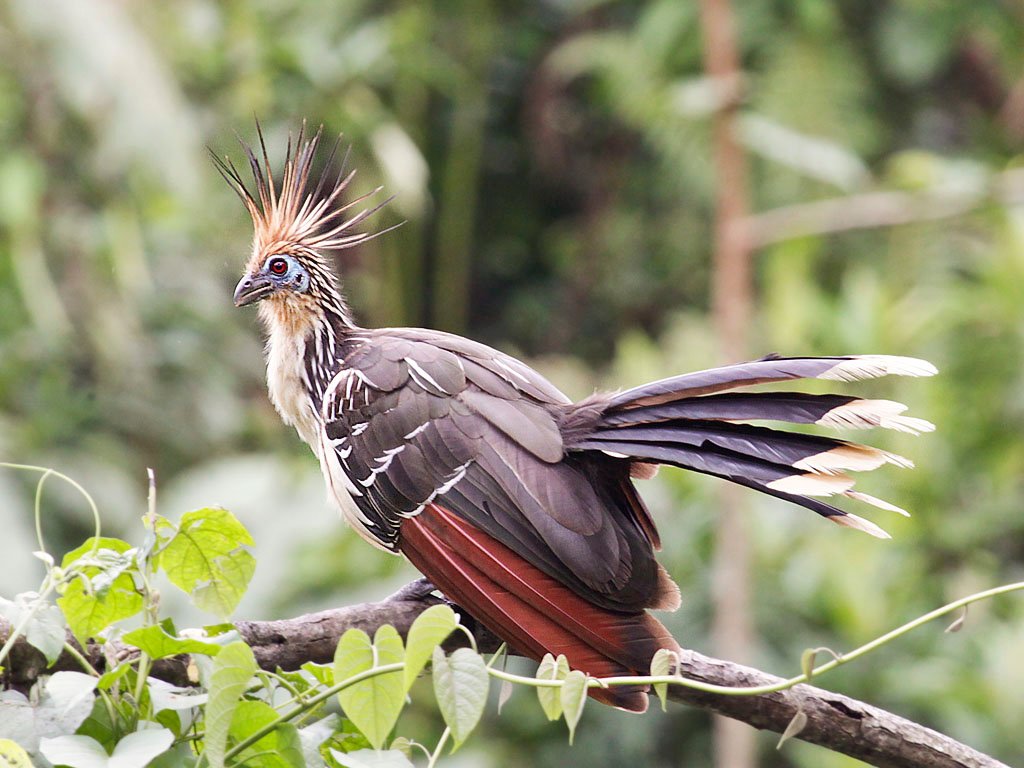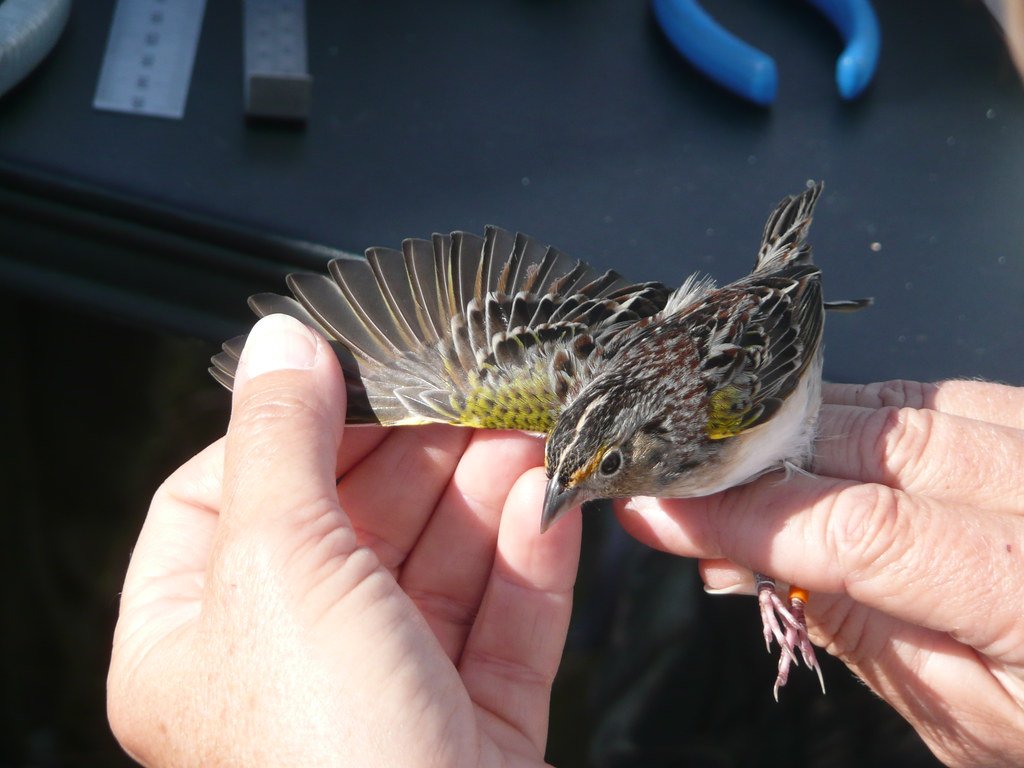There’s a bird lurking in the dense, steamy jungles of South America that defies everything we think we know about survival. Imagine a creature so bizarre that it smells like a pile of rotting leaves—or even worse, decaying flesh—all for the sake of outsmarting its enemies. Meet the Hoatzin, a prehistoric-looking marvel whose stench is its secret weapon. This isn’t just another pretty songbird flitting through the trees; the Hoatzin is a living fossil, a walking contradiction, and undoubtedly one of nature’s most unforgettable oddities. If you thought camouflage or flight were the ultimate tricks for escaping predators, wait until you discover how sheer stinkiness can mean the difference between life and death. Let’s journey into the tangled wilds and unravel the secrets of the Hoatzin—nature’s smelliest survivor.
A Bird Like No Other: The Hoatzin’s Identity
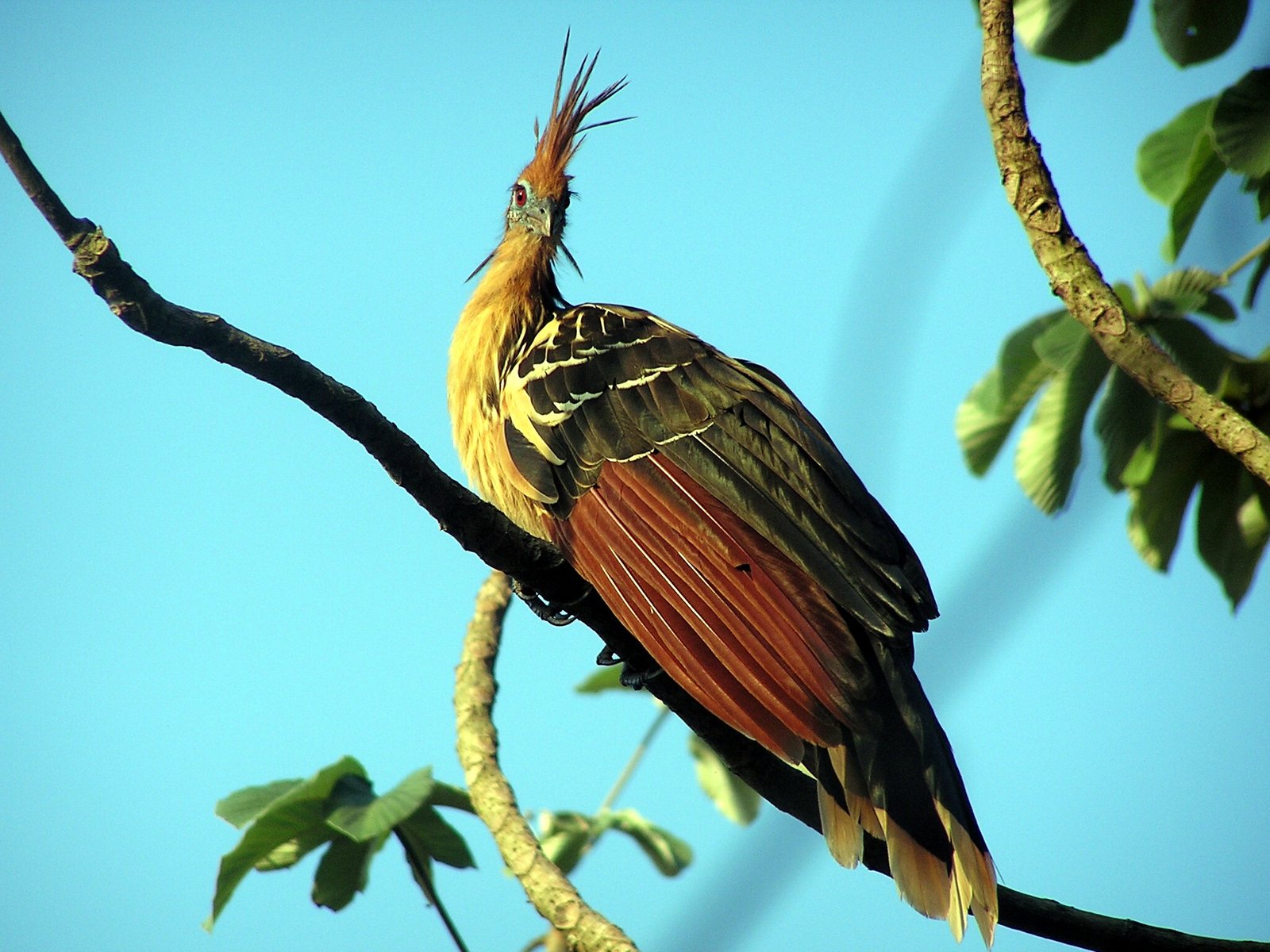
The Hoatzin (Opisthocomus hoazin) is a bird that looks like it flew straight out of a time machine, sporting a wild crest, blue facial skin, and startling red eyes. Unlike most birds, the Hoatzin is immediately recognizable—its ragged feathers and unique silhouette set it apart. Often called the “stinkbird,” it lives along slow-moving rivers and swamps of the Amazon and Orinoco basins. Its appearance is so peculiar that scientists have long debated where it fits on the evolutionary tree. Some even believe it resembles ancient birds that lived millions of years ago. The Hoatzin’s distinct look isn’t just for show—it’s a signal that this is a creature with an unusual story.
The Stench of Survival: Why the Hoatzin Smells So Bad
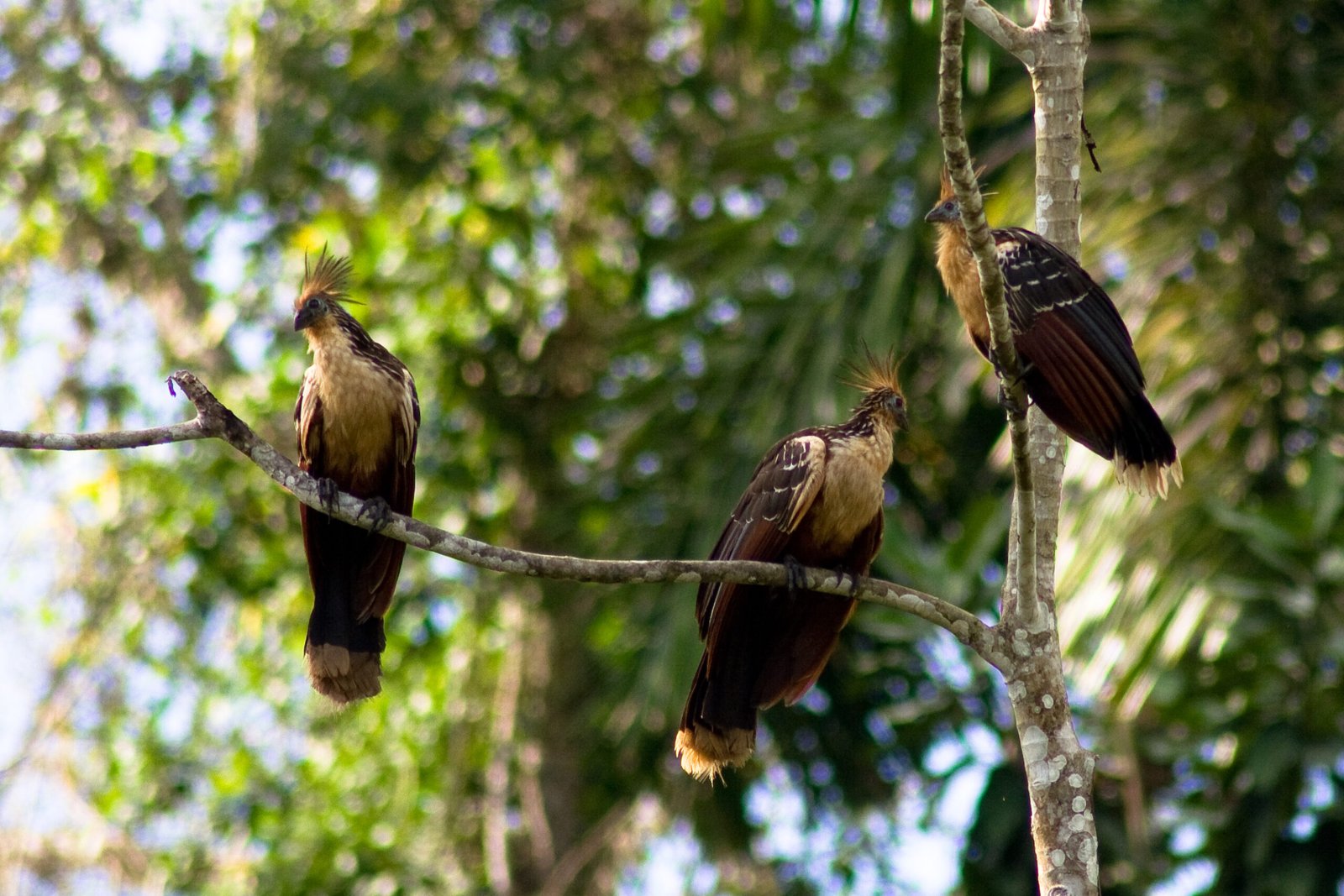
The Hoatzin’s most infamous feature is its overpowering odor, often compared to cow manure, rotten compost, or decaying flesh. This smell isn’t just a side effect; it’s a clever defense mechanism. Many predators rely on their sense of smell to find prey, and the Hoatzin’s foul aroma tricks would-be attackers into thinking the bird is sick, spoiled, or already dead. This stench is so effective that even large birds of prey and jungle cats tend to avoid it, giving the Hoatzin a fighting chance in a dangerous world. It’s an extreme example of how some animals use more than just speed or camouflage to stay alive. The Hoatzin has made being gross into an art form.
How the Hoatzin Makes Its Smell: A Digestive Mystery
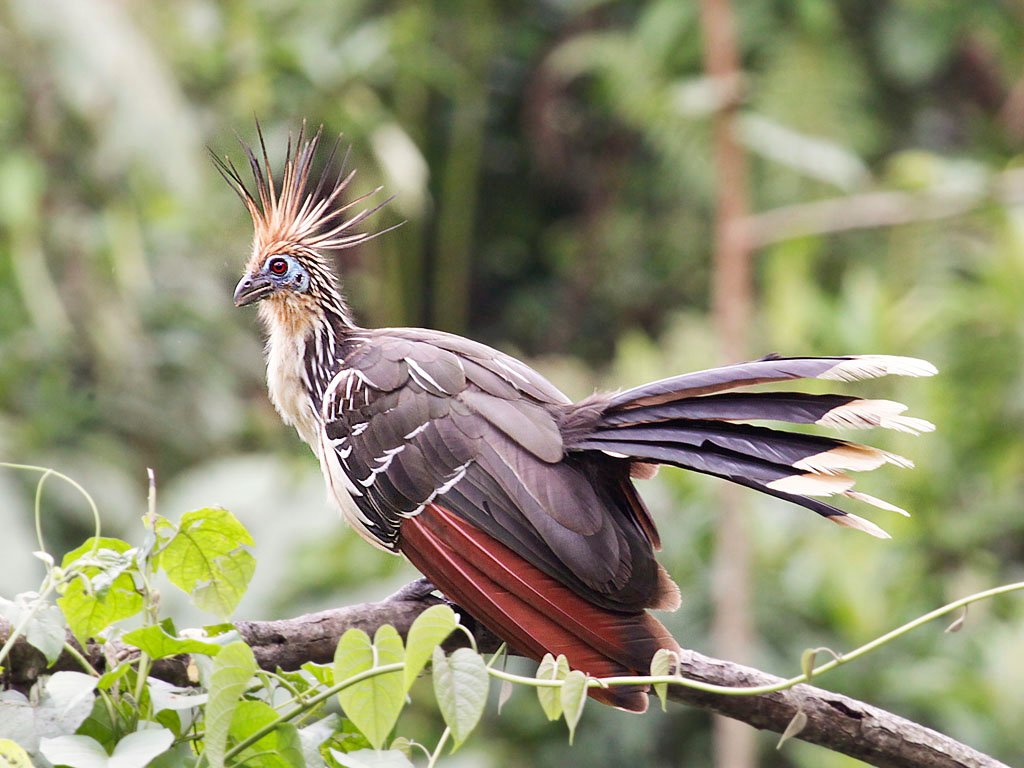
The secret behind the Hoatzin’s stink lies deep in its gut. Unlike other birds, Hoatzins are strict vegetarians, feeding almost entirely on leaves. To digest this tough, fibrous diet, the Hoatzin has evolved a unique foregut fermentation system—remarkably similar to a cow’s stomach. Bacteria in the bird’s enlarged crop break down the leaves, creating a bubbling, odoriferous brew that produces the characteristic stench. This digestion process is so unusual that when a Hoatzin is disturbed, it often belches up a cloud of foul-smelling gas. The bird’s digestive tract is so large and specialized that it even affects the way it flies, making it somewhat clumsy in the air.
Leaf-Eating Lifestyle: The Hoatzin’s Unusual Diet
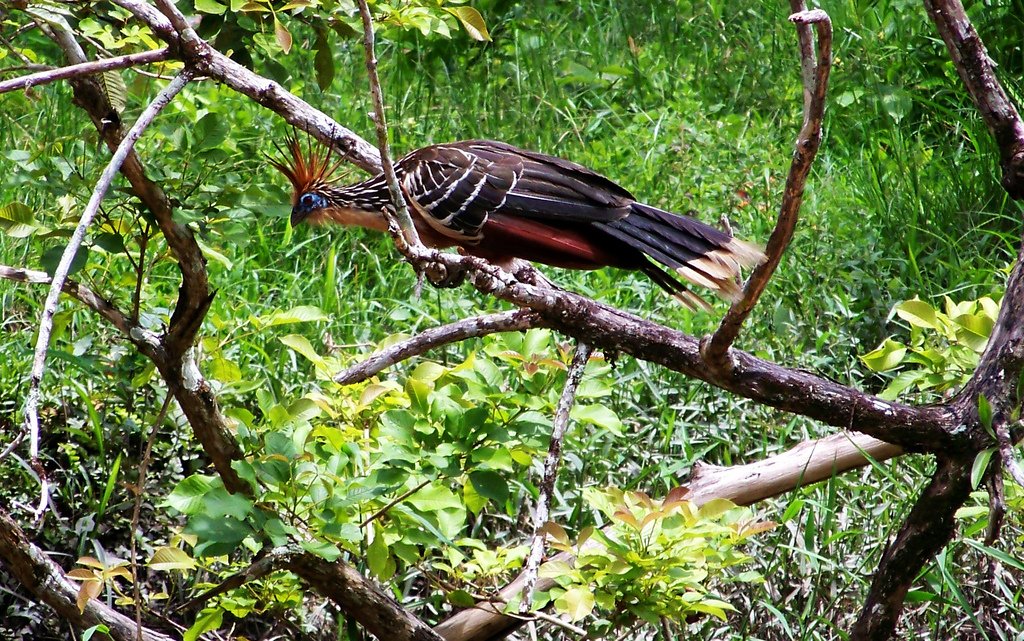
Most birds opt for seeds, fruits, or insects, but the Hoatzin is a strict folivore, relying almost entirely on tender leaves, buds, and flowers for nutrition. This leaf-based diet is incredibly tough to digest, which is why the Hoatzin’s gut is so unique. Young shoots and soft leaves are preferred, often plucked from overhanging branches above muddy rivers. The bird’s slow movements and methodical feeding style make it seem almost lazy, but this careful approach helps it avoid predators while gathering enough food. Hoatzins are often seen in small, noisy flocks, stripping leaves and croaking loudly as they go. Their diet and digestion not only set them apart but also shape every aspect of their lives.
Living in the Swamps: The Hoatzin’s Habitat
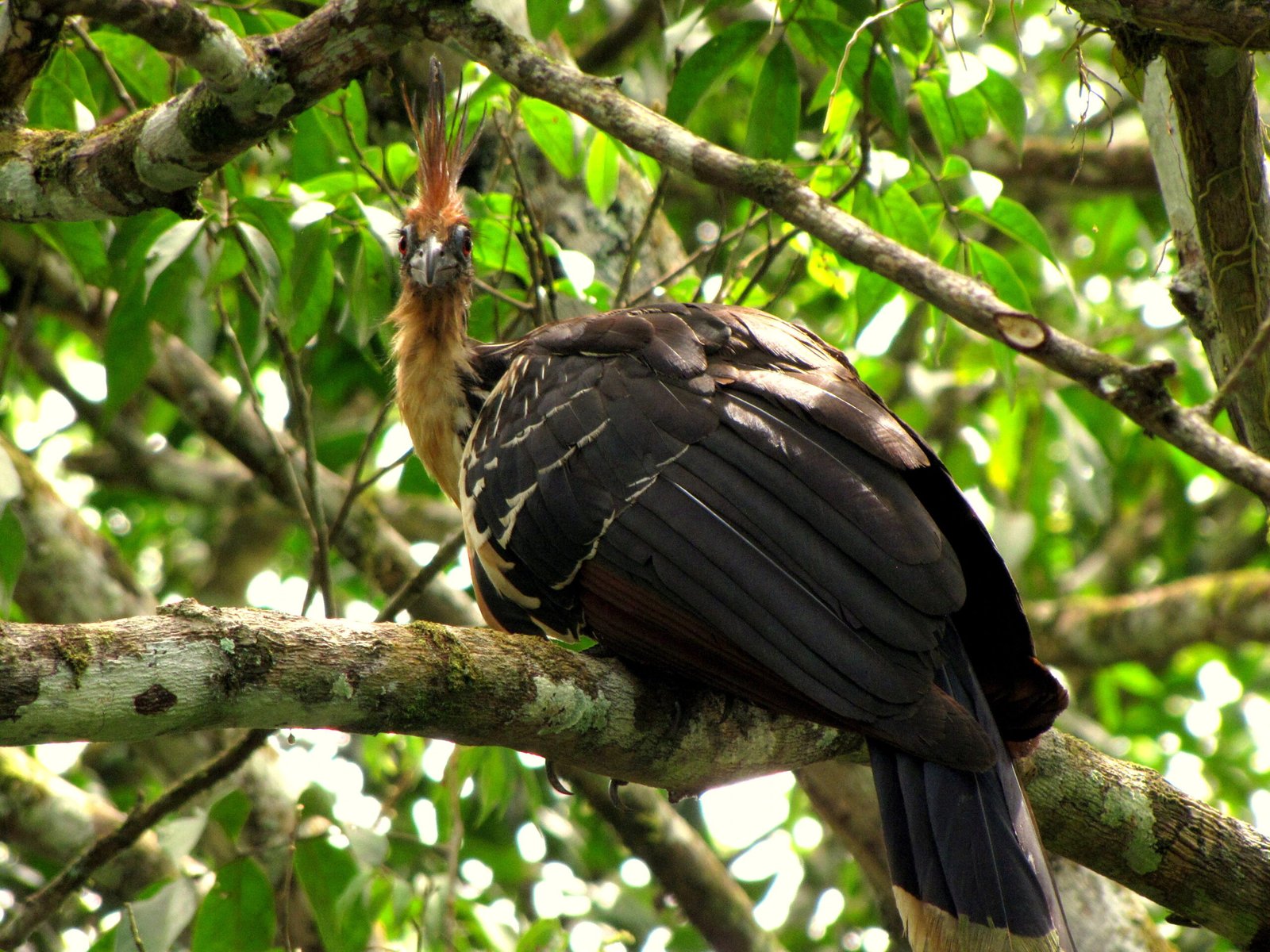
Hoatzins make their homes in the flooded forests, mangroves, and marshy riverbanks of South America’s Amazon and Orinoco basins. These habitats are teeming with life, but also full of dangers. The dense undergrowth and tangled branches provide both food and protection, allowing Hoatzins to stay hidden from predators. The birds often build their nests just above the water, so that chicks can drop safely into the river if threatened. This environment shapes every part of the Hoatzin’s existence, from its nesting habits to its social behavior. Living in such a challenging place demands creative survival strategies—and the Hoatzin’s combination of bad smell, odd diet, and swampy lifestyle is a winning formula.
Prehistoric Relic: Evolutionary Oddity

Scientists have puzzled over the Hoatzin’s origins for decades. Its anatomy contains a strange mix of primitive and modern traits, making it a living fossil in the truest sense. The Hoatzin’s chicks are born with two claws on each wing—just like the ancient bird Archaeopteryx—allowing them to climb branches before they can fly. This gives the young birds a better chance of escaping danger, as they can scramble back to safety if they fall into the water. The Hoatzin’s evolutionary path is so unusual that it has baffled researchers, with some even suggesting the bird deserves its own separate order. This evolutionary oddball continues to surprise scientists and birdwatchers alike.
Family Life: Social and Noisy
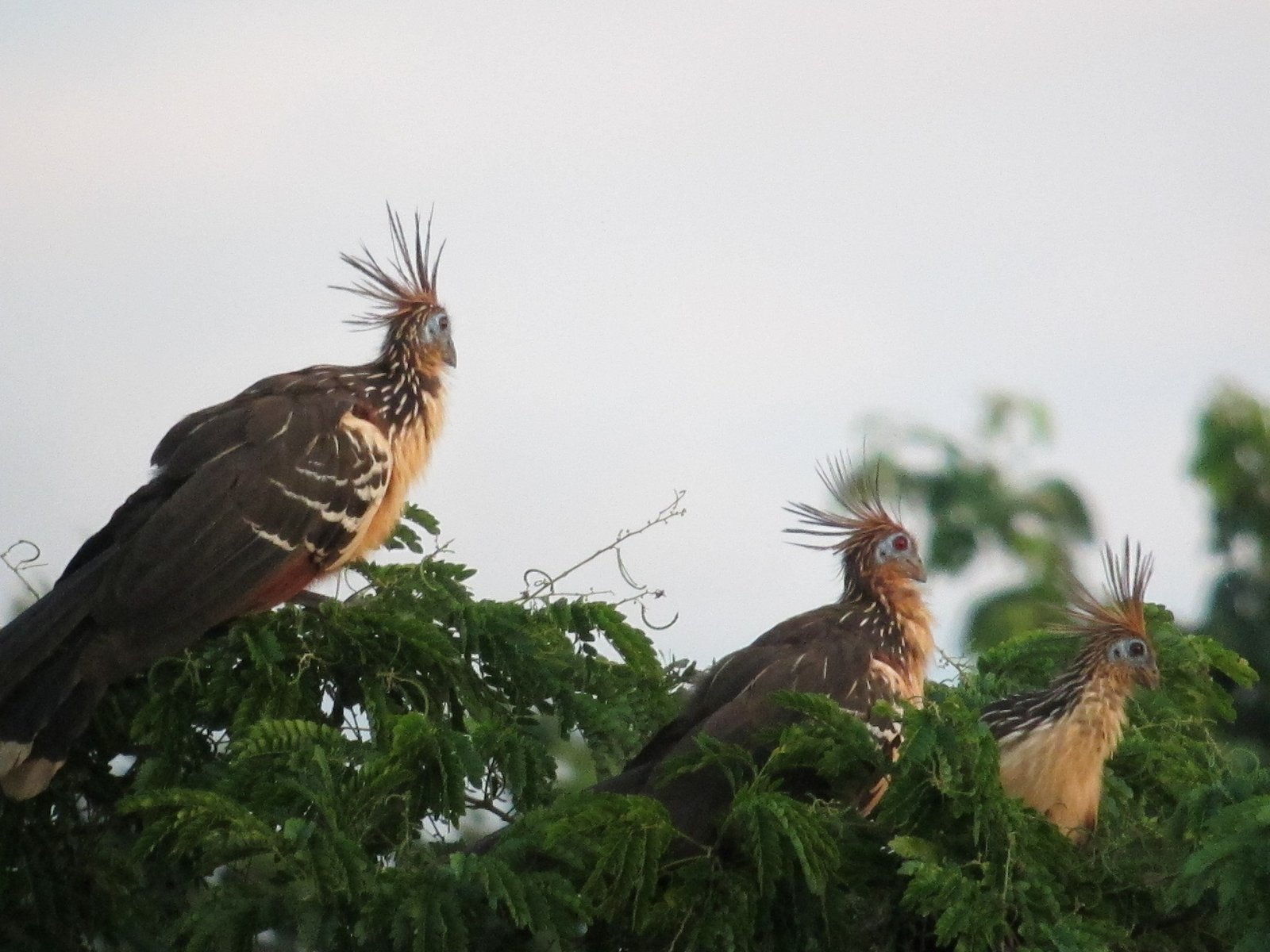
Hoatzins are not solitary creatures; they live in small family groups or flocks, often numbering up to a dozen individuals. These birds are highly social, communicating with each other through a range of grunts, croaks, hisses, and even hoarse screeches. Their noisy gatherings are a familiar sound along jungle waterways. Hoatzin nests are usually built in close proximity, and both parents help raise the chicks. When danger approaches, the entire group may launch into a chorus of alarm calls, and chicks often leap from the nest into the water below, swimming back to safety. This tight-knit social structure helps ensure the survival of the next generation.
Hoatzin Chicks: Born Climbers and Swimmers
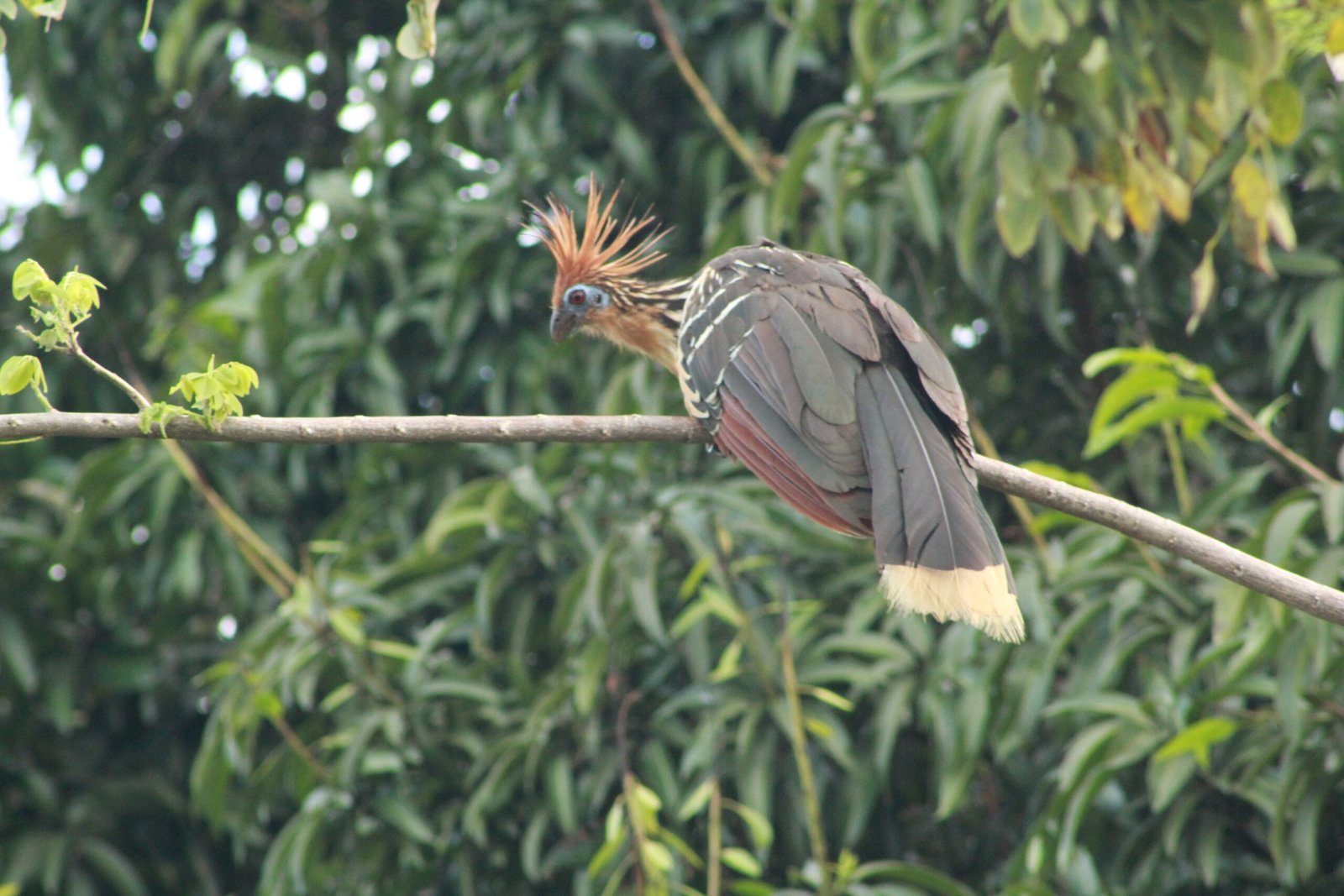
The life of a Hoatzin chick begins with a dramatic twist. Hatched with tiny claws on their wings, these chicks can climb branches and vegetation long before they can fly. If threatened by predators, the chicks jump from their nests into the muddy water below, using their wings and feet to swim to safety. Once the danger has passed, they climb back up the branches to rejoin their family. This incredible adaptability gives the chicks a much better chance of surviving in a world full of dangers. The combination of climbing, swimming, and eventually flying makes Hoatzin chicks some of the most versatile young birds in the animal kingdom.
Predators and Threats: Outsmarting Danger
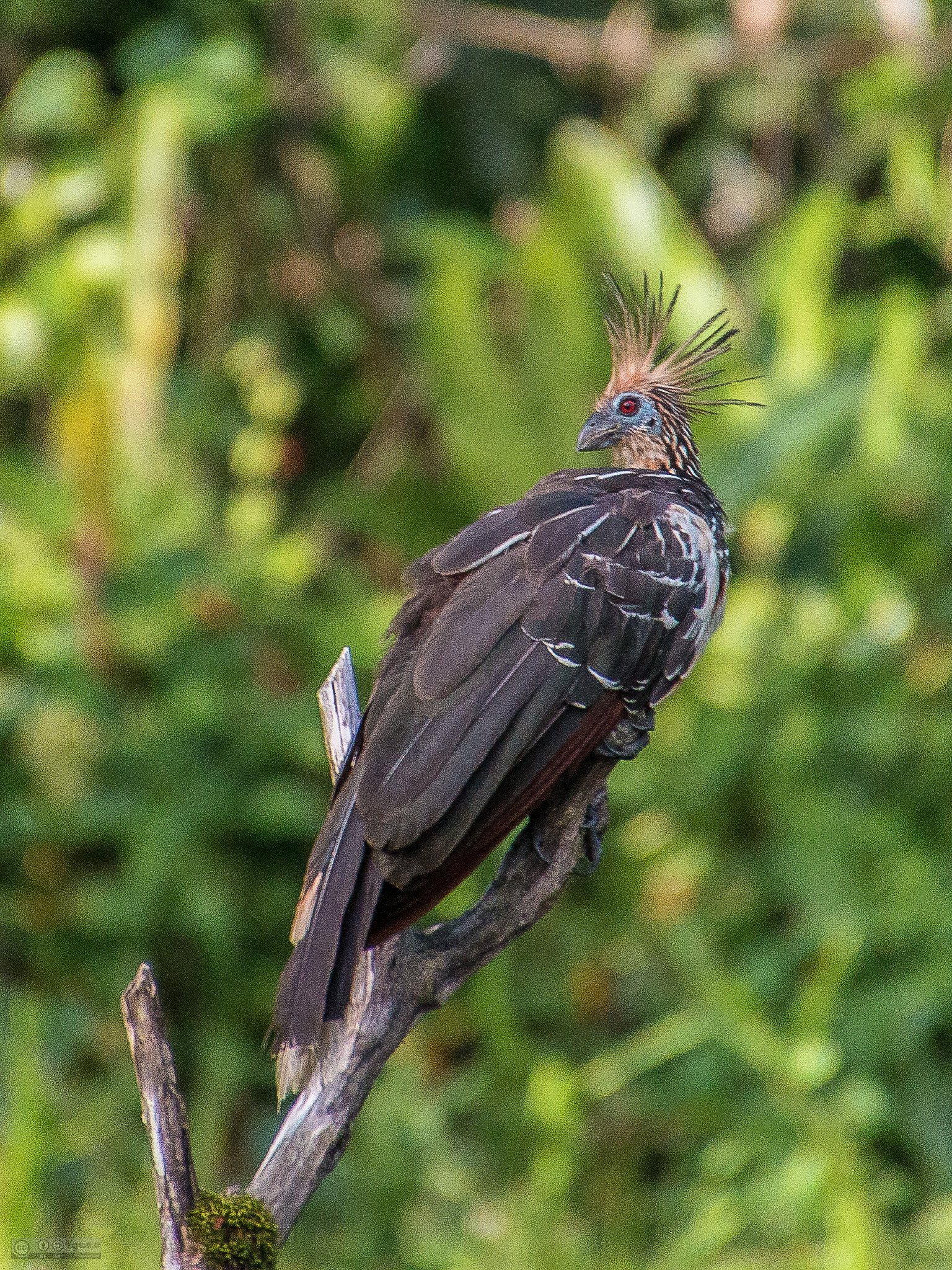
Despite their smelly reputation, Hoatzins still face threats from snakes, raptors, and even humans who sometimes disturb their nesting sites. However, the bird’s foul odor is a powerful deterrent, making it an unattractive meal for most predators. Their swampy homes provide further protection, as dense vegetation and water barriers make it difficult for many animals to reach their nests. Human activity, such as deforestation and river pollution, poses a more serious long-term threat to Hoatzin populations. Still, their unique adaptations and communal living help them fend off many dangers that would spell doom for less prepared birds.
The Hoatzin and Human Curiosity
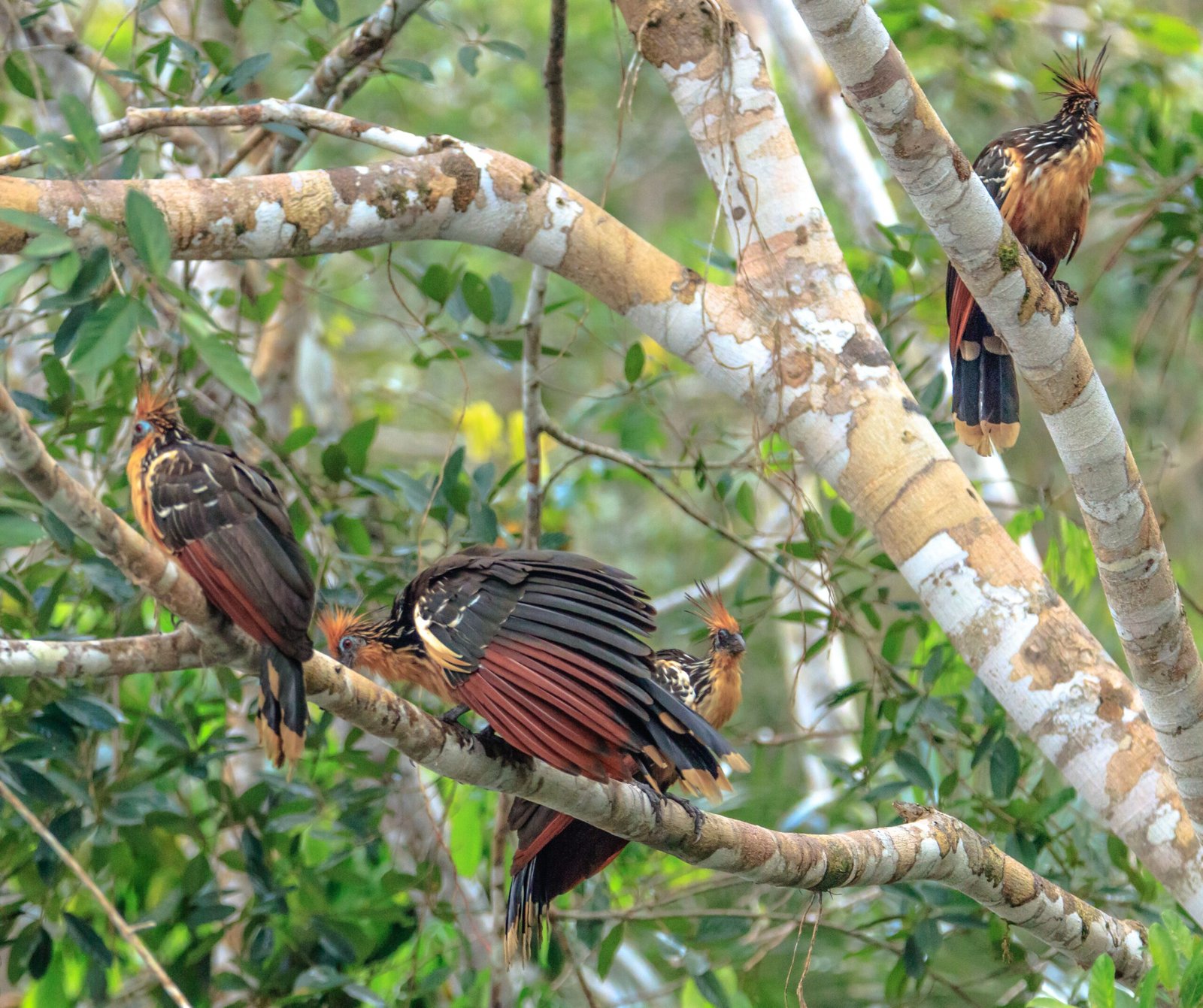
For centuries, the Hoatzin has fascinated travelers, biologists, and indigenous people alike. Its bizarre appearance, peculiar habits, and unforgettable smell have made it a legendary figure in South American folklore. Modern researchers continue to study the Hoatzin to better understand avian evolution, digestion, and social behavior. Birdwatchers from around the world travel to the Amazon hoping to catch a glimpse (and perhaps a whiff) of this extraordinary bird. The Hoatzin’s oddities have sparked debates and inspired wonder, reminding us just how strange and unpredictable the natural world can be.
Nature’s Outcast or Hidden Genius?
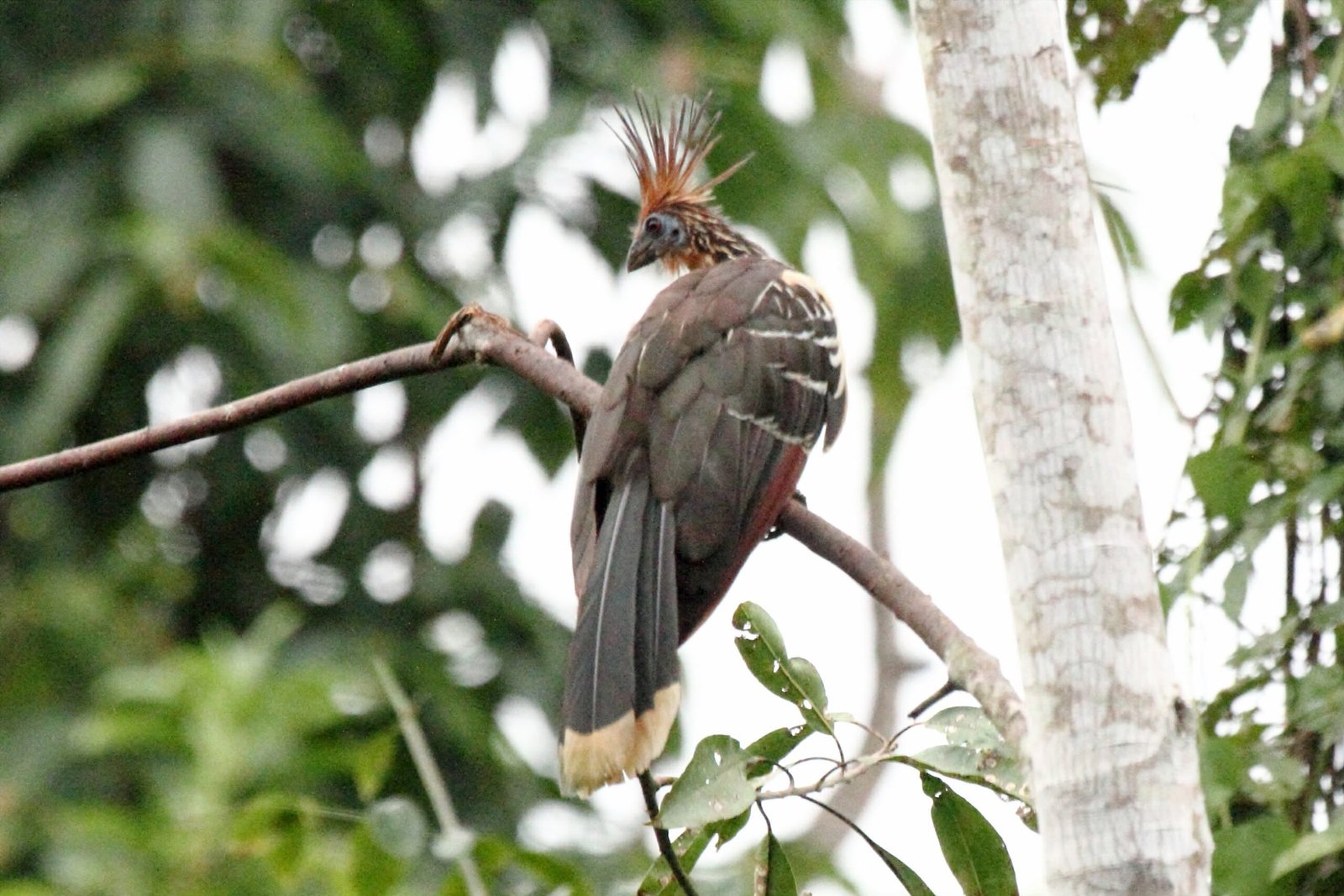
The Hoatzin is a bird that challenges our expectations at every turn. It’s not beautiful in the traditional sense, nor does it sing sweet melodies. Instead, it survives through a mix of teamwork, adaptability, and sheer stink. Its evolutionary quirks have made it a survivor in a hostile world, turning what most animals would consider a flaw—bad smell—into its greatest asset. The Hoatzin proves that sometimes, the most unconventional strategies are the ones that work best. Would you have guessed that smelling like rotting flesh could be a ticket to survival?

